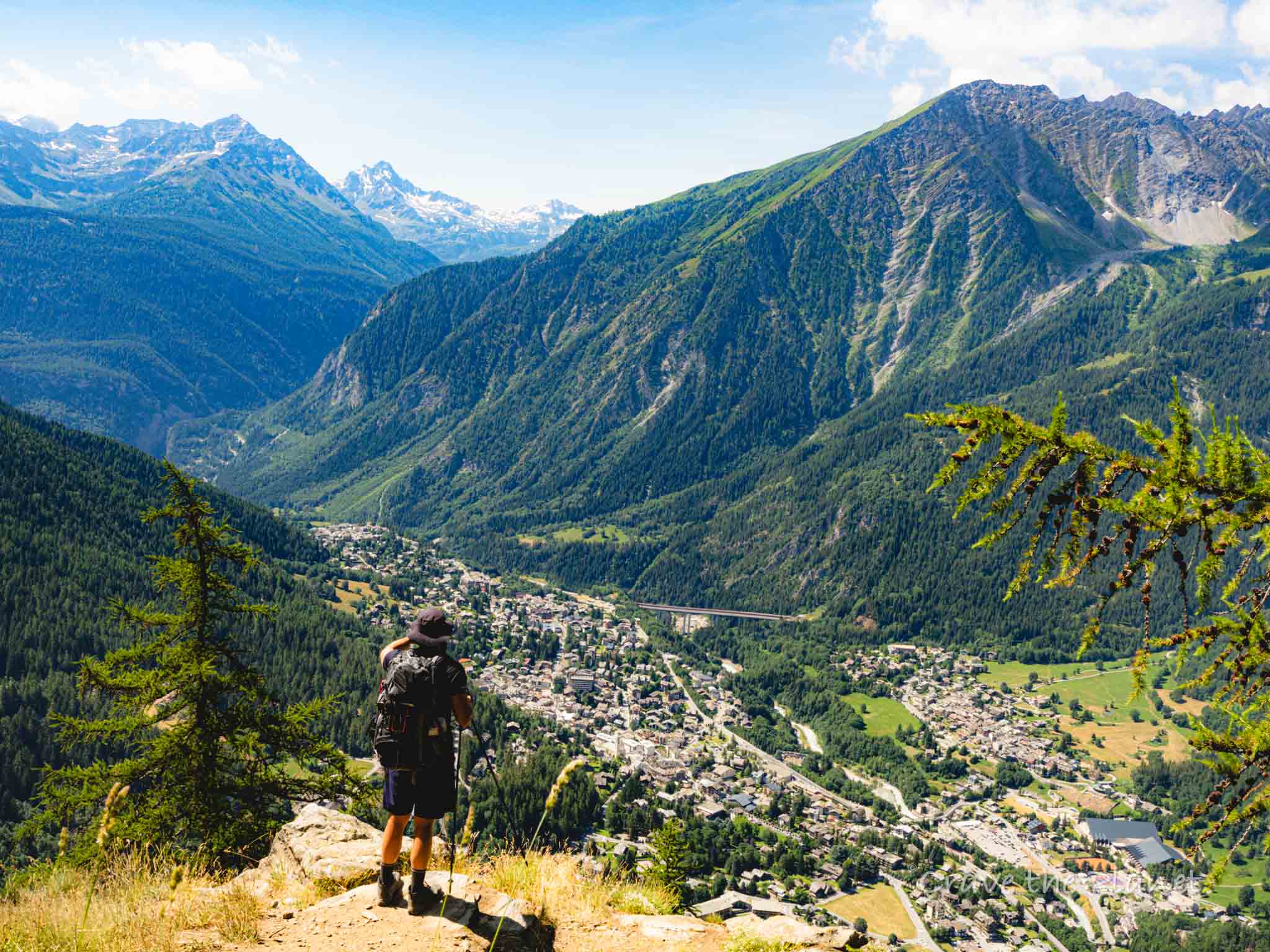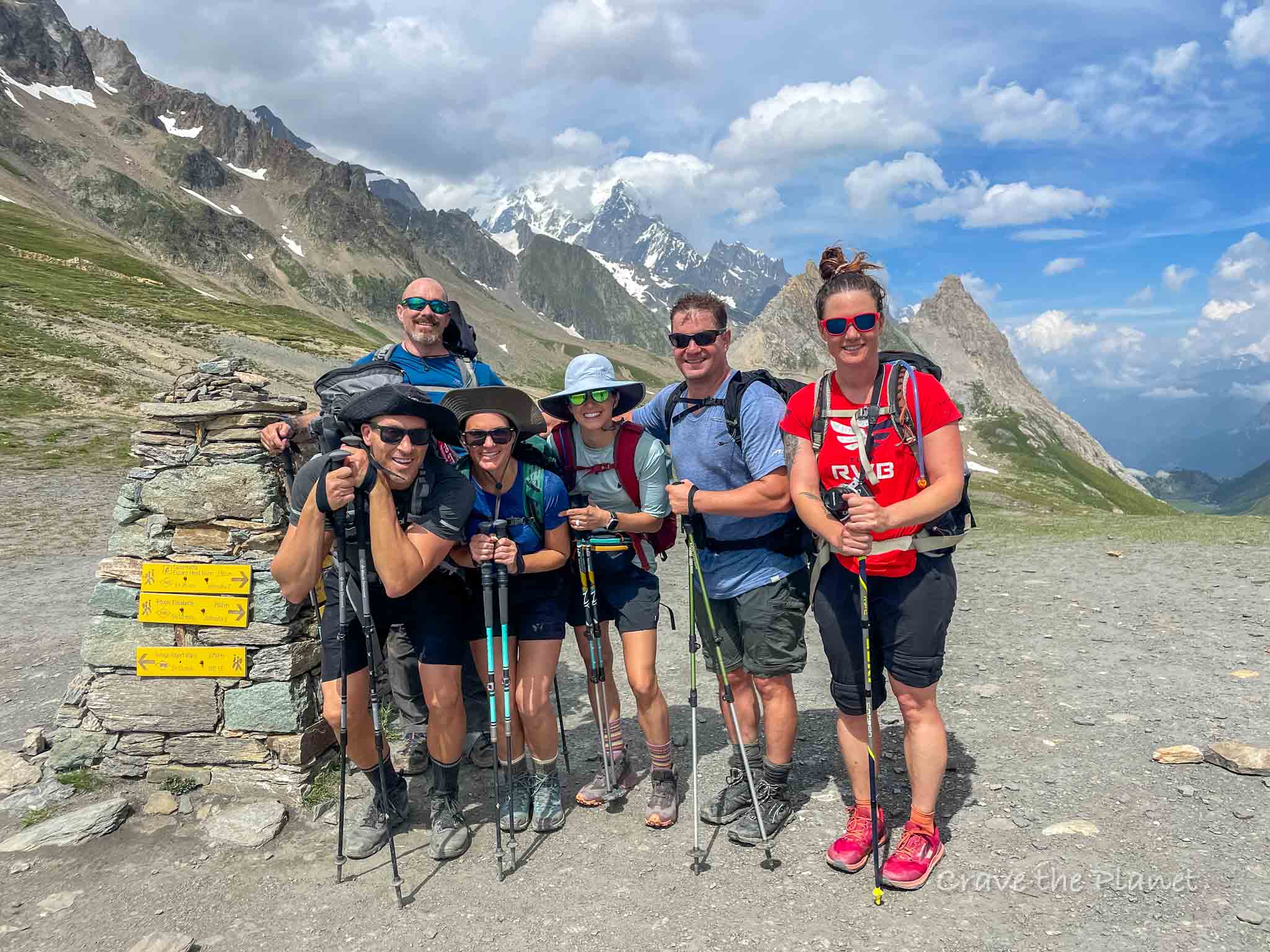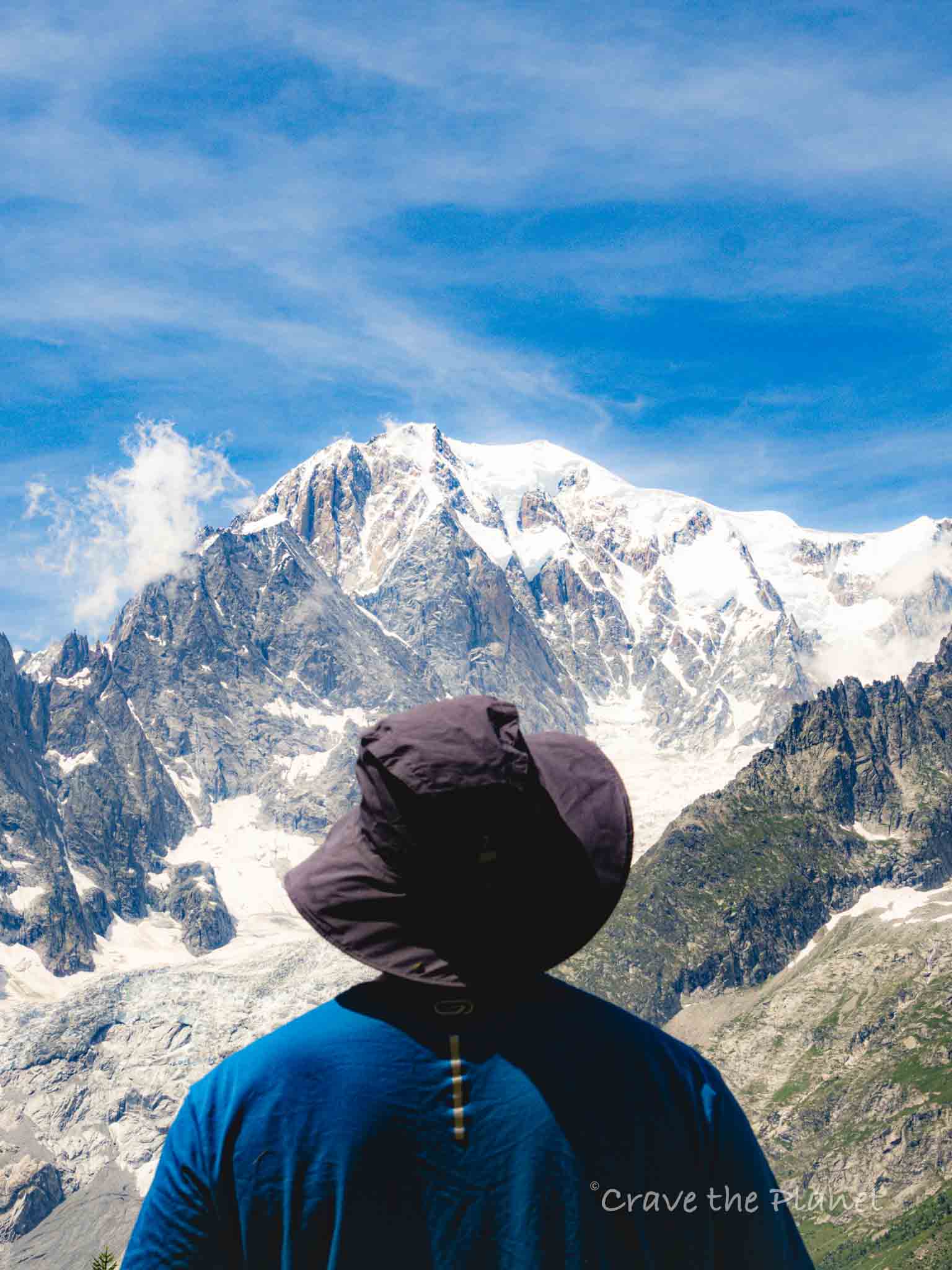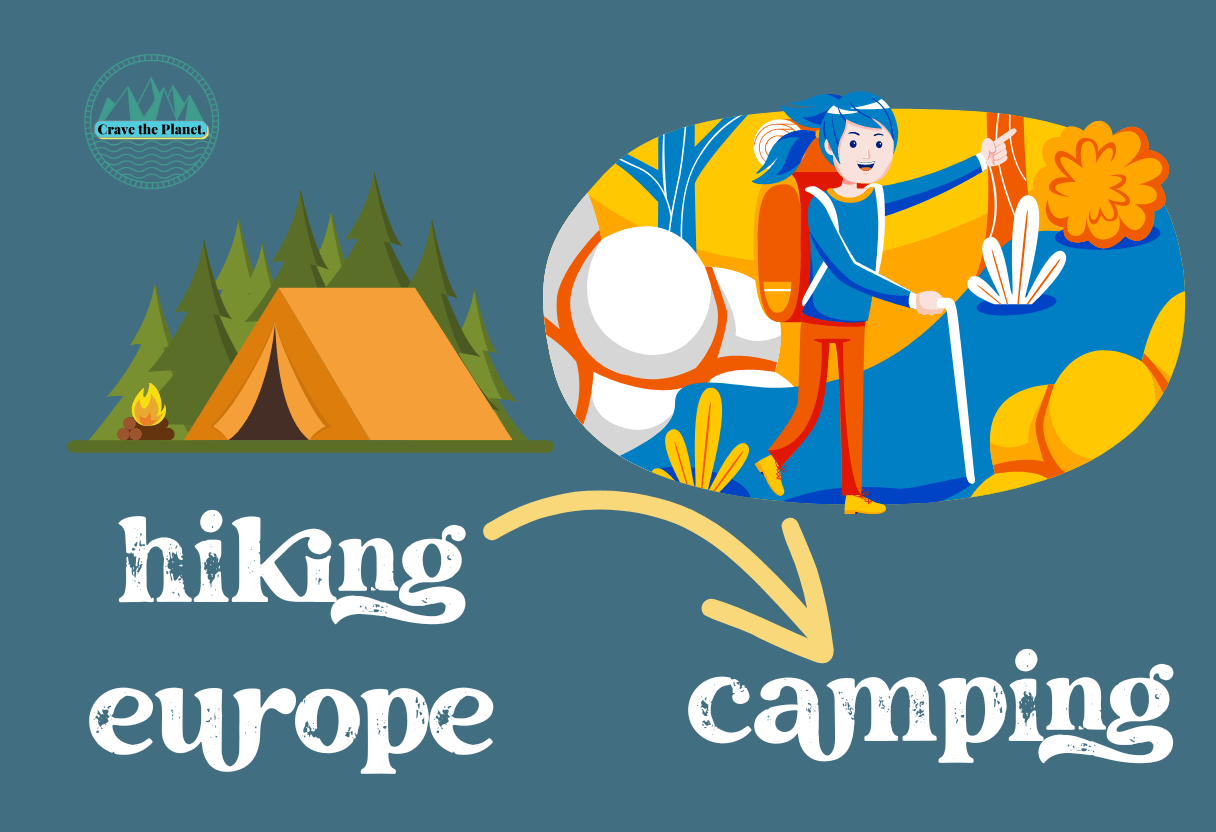Not sure what to expect? Here’s a list of the basic tips for your first hut to hut hike based on my personal experience in the Alps and Dolomites for the past 5 years with my kids.
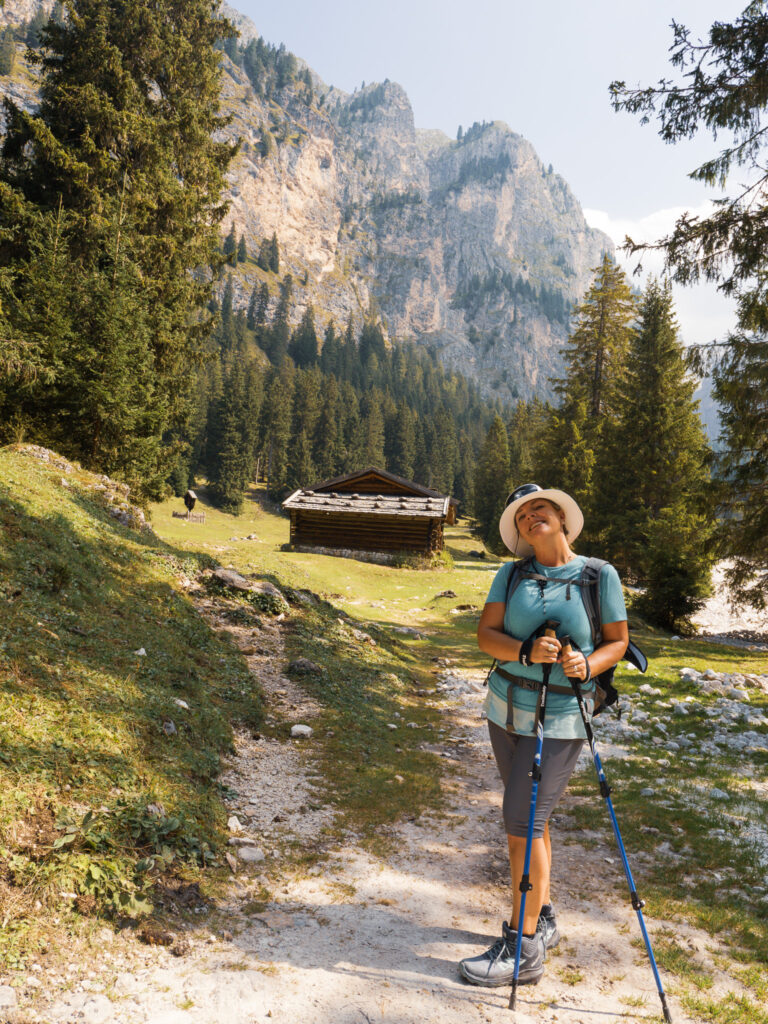
Trust me, a hut to hut hike vacation can be life-changing. A hiking vacation with comfortable beds, good wine, 3 course dinners is hard to beat. With no purpose to the day other than to walk and soak in Mother Nature in some of the most scenic places in the world helps you tap into Awe with a capital A.
Morgan’s Youtube of the Food Experience in the Dolomites Huts
But, it can be hard and the weather can be fickle (we got stranded in an Aug blizzard in Italy one time, but riding it out in the hut was fun).
It’s vital to do some planning as the best huts often book up in winter for the following summers in Europe.
Learn from my mistakes with this article. Read until the end for my Hiker Quiz!
What You Will Learn
- Preparations for Hut-to-Hut Hiking
- Become a European Adventure Travel Insider in Just 5 minutes
- Choosing Your Hiking Adventure: Guided Tours versus Independent Trekking
- Choosing Your Path and Navigation
- Experiences and Challenges while Hiking
- Enjoying Meals at Alpine Shelters
- Essential Packing Tips for Your Multi-Day Trek
- Evening Rituals and Guidelines for Hikers’ Accommodations
- Final Verdict: Ways to Book a Hut to Hut Hiking Trip
- What Kind of Hiker Are You Quiz
- FAQ: Basic Tips for Your First Hut to Hut Hike
Preparations for Hut-to-Hut Hiking
When embarking on a hut-to-hut hike, keeping your load minimal is key.
Let me say that again: PACK LIGHT!

You’ll be provided shelter, so there’s no need for the bulk of camping equipment.
Hey there hiker –
Let me repeat: Pack light.
How? Before you leave your home, weigh everything and write it down on a piece of paper or your phone. Try to shed 20% of that weight. When you return, make a note of what you didn’t actually use (it will be a lot, trust me) so you don’t take it next time.
Essential items include:
- Warm and functional clothing
- Sturdy hiking boots
- Compact sleeping bag liner
- Small backpack for daily essentials
- Indoor footwear
- Rescue insurance – I highly recommend Global Rescue based out of New Hampshire
Securing a bed in advance is crucial, especially on coveted routes like the Alta Via 1 in the Dolomites or the Tour du Mont Blanc. Reservations should be made well ahead of your journey to avoid being left without accommodations.
Always be ready for capricious weather. Pack garments that protect against cold, such as waterproof jacket and pants, and accessories for sun protection. Being adaptable is a must; the mountain’s mood can shift unexpectedly, prompting a change in plans.
Respect for the fragile ecosystems of the Alps and other mountain ranges is non-negotiable. Practice Leave No Trace principles: dispose of waste properly and keep to the trails. Don’t leave your trash at the huts.
Your attentiveness helps preserve the beauty for future adventurers.
In case of unforeseen situations, an emergency kit is a must-have. It should include:
- Sufficient water supply
- First-aid kit
- Headlamp for dark conditions
Embrace the challenge, enjoy the comfort of mountain huts after each day’s hike, and treasure the memories made in the heart of nature’s splendor.
With these practical tips, your hut-to-hut hiking trip will be one to remember.
Become a European Adventure Travel Insider in Just 5 minutes
✨Unlock Europe’s best-kept secrets with our free bi-weekly newsletter.

Choosing Your Hiking Adventure: Guided Tours versus Independent Trekking
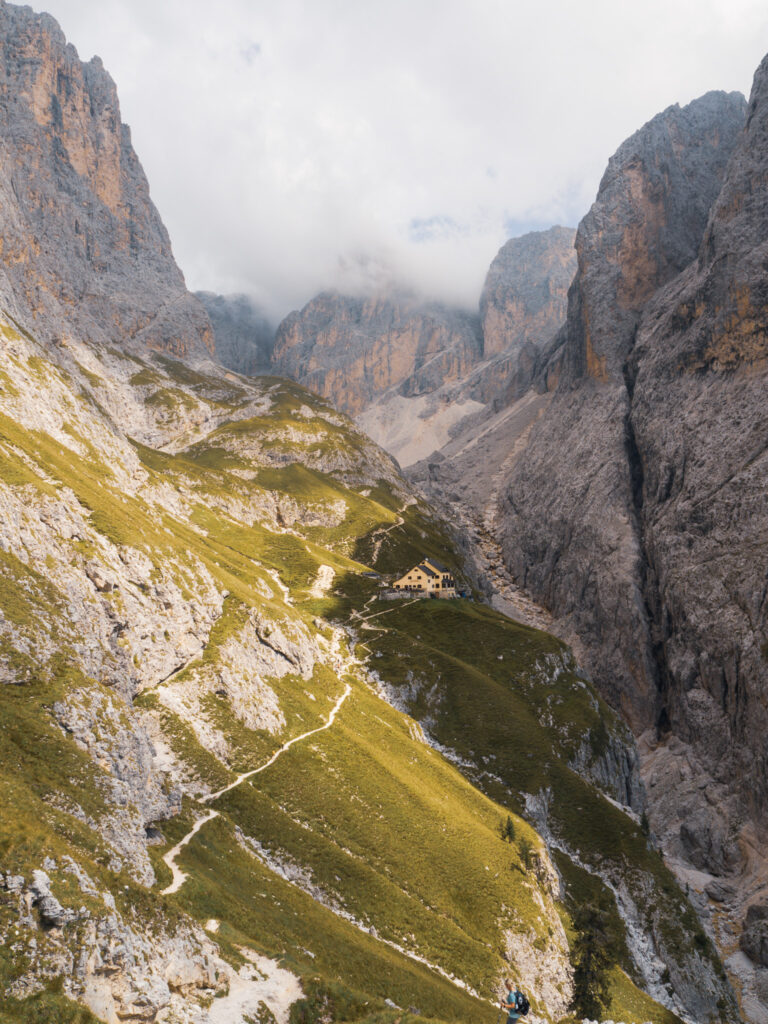
When preparing for your debut journey from one hut to another, consider the type of experience you desire. Your decision to embark on a guided tour or venture independently (self-guided) holds significance for your trekking adventure.
Guided Tours
- Expertise: Gain insights from experienced guides who know the trails and can offer fascinating local knowledge.
- Safety: Benefit from the safety of traveling with someone knowledgeable about the region’s hazards.
- Convenience: Enjoy having your itinerary planned, meals taken care of, and accommodations handled.
- Social: Meet like-minded hikers and enjoy the camaraderie of a group setting.
- Freedom: Relish the flexibility to set your own pace and make spontaneous decisions.
- Challenge: Take the opportunity to strengthen your self-reliance and navigation skills.
- Solitude: Experience the tranquility of hiking alone or with your chosen companions without a group.
- Budget: Potentially save money by handling your own arrangements and avoiding guide fees.
When deciding, assess your comfort level with navigation, your desire for social interaction, and the satisfaction you derive from planning the details of your trip. Whether you seek the guided assurance or the independence of a self-led adventure, ensure you’re well-prepared with the right gear, knowledge, and respect for the environment.
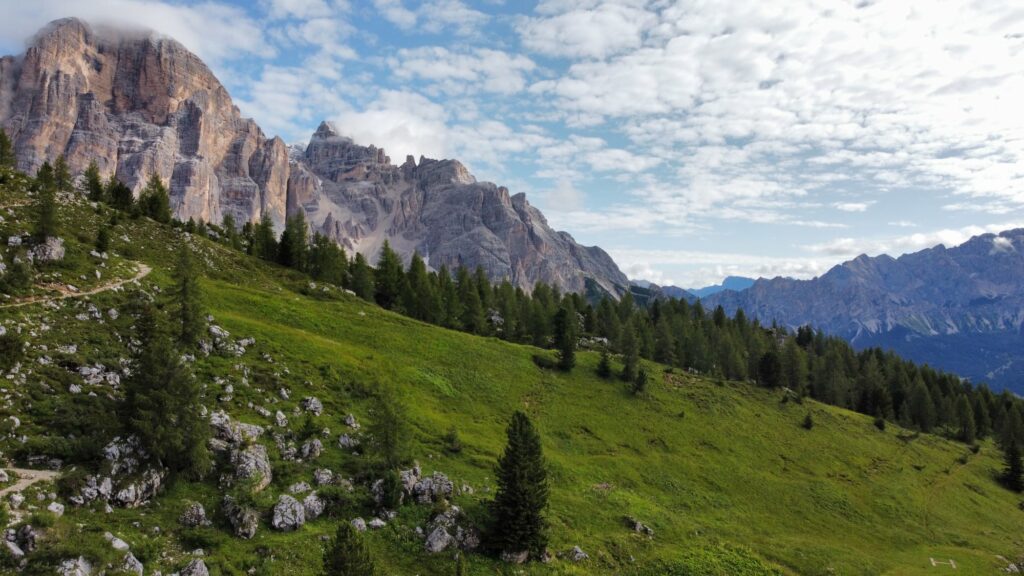
When embarking on your initial hut-to-hut hiking adventure, selecting a suitable path is crucial for an enjoyable experience. Below are some effective strategies to help you choose and navigate your trail:
- Research Trail Difficulty: Assess the difficulty level of various trails to find one that matches your hiking abilities. Trails can range from easy to strenuous.
- Study Maps and Guides: Familiarize yourself with the route by studying trail maps and guides. Understanding the terrain, distances between huts, and notable landmarks are essential.
- Check Current Conditions: Trails can change due to weather or maintenance. Visit official park websites or contact local ranger stations to get updates on trail conditions.
- Estimate Hiking Time: Calculate approximate hiking times between huts considering your speed, breaks, and daylight hours.
- Pack Navigation Tools: Carry a detailed trail map, a compass, and consider a GPS device as a backup. Don’t rely solely on mobile phones for navigation.
- Plan Water Sources: Know where you can refill your water bottles. Some trails have water stations, while others require you to treat water from natural sources.
- Be Aware of Wildlife: Read up on wildlife you might encounter and how to safely deal with any interactions.
- Inform Someone of Your Route: Let a friend or family member know of your plans and expected return time. Consider mountain walkie talkies if going in a group due to poor cell service.
- Leave No Trace: Follow the principles of Leave No Trace. Respect the environment and minimize your impact on nature.
Being well-prepared and informed ensures a safer and more enjoyable hut-to-hut hiking trip. Remember to pace yourself and take time to appreciate the natural beauty around you.
Experiences and Challenges while Hiking
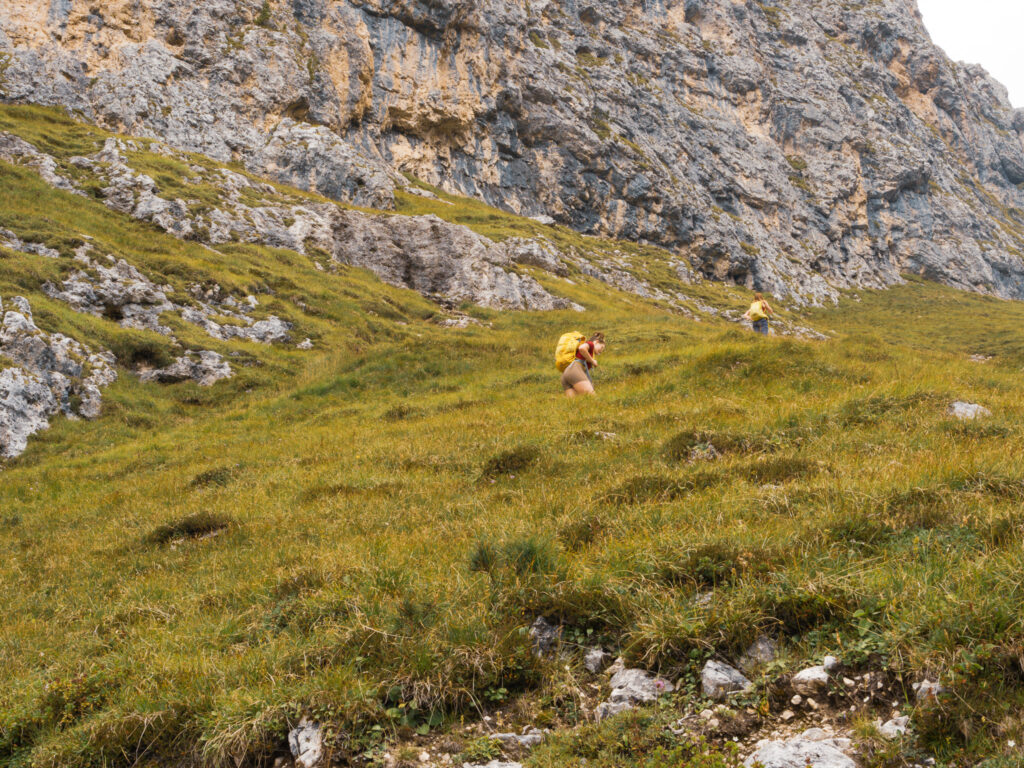
When you set out on a trail, particularly if it’s your first hut-to-hut hike, you’ll encounter a variety of experiences and obstacles. Here’s what to anticipate:
- Varied Terrain: Be prepared to navigate through diverse landscapes which could include steep inclines, rocky paths, and potentially slippery conditions depending on the weather.
- Weather Fluctuations: Weather can be unpredictable. One moment the sun may shine; the next, you might face rain or even snow at higher elevations.
- Physical Demands: Hiking for multiple days is physically taxing. You’ll need a good level of fitness to cover the distances, especially with a pack.
- Mental Toughness: Beyond the physical aspect, staying mentally strong is crucial. You’ll need to push through tiredness and discomfort.
- Language: Often you’ll be in a foreign country to do this. Know that hut in German is Hütte and in Italian its Rifugio.
What to Consider:
- Understand the distance between huts and ensure it matches your fitness level.
- Hike with a companion for safety and support.
- Remain hydrated and nourished; bring sufficient water and high-energy foods.
- Familiarize yourself with the hut amenities. Some huts offer full services, while others are more basic.
- Practice Leave No Trace principles to minimize your impact on the environment.
In case of emergency 👉 Rescue Insurance
Crave the Planet partners with Global Rescue to offer the world’s leading travel protection services. Medical and security emergencies happen. When they do, we rely on Global Rescue to provide our clients with medical, security, travel risk and crisis response services.
Without a membership, an emergency evacuation could cost over $100,000. More than one million members trust Global Rescue to get them home safely when the unexpected happens. Learn more about trekking insurance, but we highly recommend our audience enroll with Global Rescue.
Pros and Cons
- Comprehensive Emergency Services: Members have access to a wide array of emergency services, including medical and security evacuations, field rescues, and telemedicine consultations.
- Global Coverage: Global Rescue operates around the world, offering support and evacuation services in both remote and urban settings, which is particularly beneficial for travelers and adventurers.
- Expertise and Resources: The company is well-regarded for its team of medical and security experts and has a partnership with Johns Hopkins Medicine, ensuring high-quality advice and care.
- Cost Factor: The membership can be expensive, especially for those who travel infrequently or are on a limited budget.
- Membership vs. Per-Trip Insurance: Since the services are membership-based, they may not be as cost-effective for those seeking coverage for a single trip as opposed to regular travelers.
- Limited Traditional Travel Insurance Benefits: The membership focuses on emergency evacuation and rescue, which means it may lack comprehensive trip insurance features like trip cancellation, baggage loss, or delay coverage.
Enjoying Meals at Alpine Shelters

When embarking on a hut-to-hut hike in the mountains, you’ll find that many of the shelters you encounter provide a place to rest and refuel with a hearty meal. The food served ranges from simple, energy-rich fare to traditional regional dishes that offer a taste of the local cuisine.
- Meal Options: Huts typically have set meal times for breakfast and dinner, with lunch often available as packed meals.
- Communal Dining: Expect to share tables with fellow hikers, cultivating a sense of camaraderie.
Booking Meals:
- Reserve your meals when you book your stay, ensuring you have a guaranteed spot at dinner and any other meals offered.
Food Quality:
- The meals are generally wholesome and satisfying, designed to replenish energy after a day of trekking. For insights into meal quality at these huts, check out the study on tourist dining experiences.
Typical Menu:
- Breakfasts are robust, often including bread, jam, cold cuts, and hot beverages.
- Dinners are multi-course, sometimes starting with soup, followed by a main course, and ending with dessert.
Special Diets:
- Inform hut personnel of any dietary restrictions in advance; they often can accommodate special dietary needs.
Costs:
- Prices for meals are usually separate from the accommodation fee and vary from hut to hut.
- If the hut calls it “half board” then the total price includes the bed, breakfast and dinner.
- Drinks are not usually included.
Remember, hut dining experiences are as much about nutrition as they are about the social experience, so embrace the opportunity to connect with others over a shared meal.
Related
👉 Costs of the TMB Hut to Hut Hike
Essential Packing Tips for Your Multi-Day Trek

When embarking on your inaugural hut-to-hut hiking journey, knowing what to pack is crucial. Your gear will be your lifeline, yet overpacking can weigh you down. Here’s a guide to keep you on track:
Must-Haves:
- Navigation Tools: A map and compass are indispensable, even if you have a GPS device.
- Water Purification: Carry purification tablets or a filter to ensure access to potable water.
- Weather-Appropriate Clothing: Include layers for warmth and a waterproof jacket for unexpected downpours.
Avoid Packing:
- Unnecessary Gadgets: Leave behind any electronics that won’t serve a purpose.
- Heavy Food Items: Opt for lightweight, calorie-dense meals instead of canned goods.
- Excess Clothing: Stick to a few versatile pieces that you can layer.
| Essentials | Reasons to Pack |
|---|---|
| Headlamp or Flashlight | Necessary for navigation in the dark. |
| First-Aid Kit | For unexpected injuries. |
| Multi-Tool | Useful for repairs and various tasks. |
| Leave Behind | Why to Skip |
|---|---|
| Fragile Items | Prone to breaking and unnecessary. |
| Oversized Items | Bulky objects complicate packing. |
| Duplicate Tools | One of each tool is sufficient. |
Remember to adjust your gear based on the specific terrain and weather predictions for your route. Preparing wisely will enhance your enjoyment and safety throughout the hike.
Evening Rituals and Guidelines for Hikers’ Accommodations
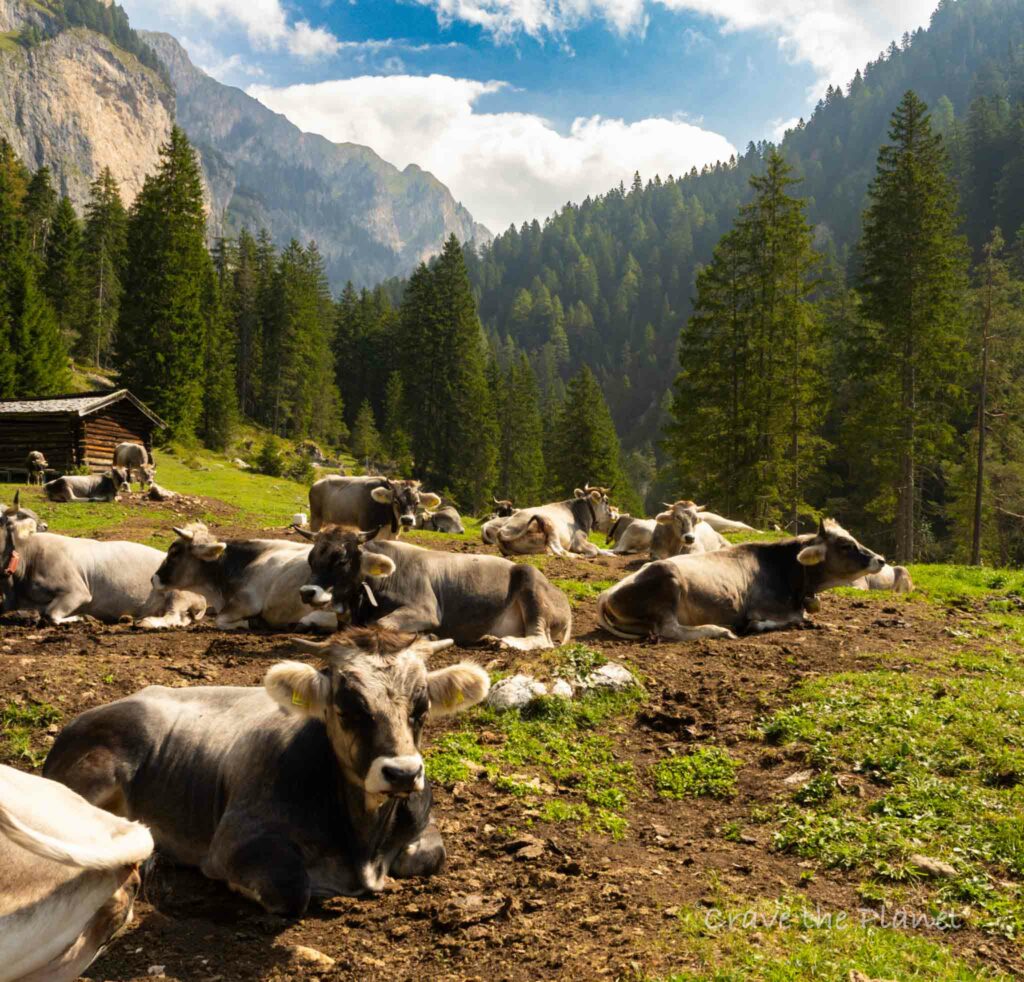
When staying in a hut during a multi-day hike, you become part of a community where everyone is expected to respect certain protocols, especially as night falls. Here’s some basic tips for your first hut to hut hike.
- Respect quiet hours: Many huts have designated quiet times, usually starting around 9 or 10 PM. This is when conversation should be hushed, and activities should be winded down to allow everyone a good night’s sleep.
- Dim the lights: Avoid using bright lights that might disturb others; a dim lantern or headlamp is usually sufficient.
- Keep tidy: Store your gear neatly and keep personal items inside your designated sleeping area to maintain order and prevent tripping in the dark.
Tipping:
- While not always customary, if the hut staff provides exceptional service, a small gratuity is a kind gesture.
- If you’re uncertain about tipping etiquette, it is acceptable to ask the hut manager or staff about local practices.
Sharing the Space:
- Respect the space: Remember that the common areas are shared by all.
- Snoring considerations: If you’re a known snorer, consider bringing earplugs to offer to your hut-mates as a courtesy.
- Keep movement to a minimum to avoid disturbing others when people start retiring to their bunks.
Safety Measures:
- Familiarize yourself with the location of exits and bathrooms before it gets dark.
- Ensure your headlamp or flashlight is within easy reach in case you need to navigate the hut at night.
By adhering to these guidelines, you will help ensure a pleasant experience for yourself and your fellow hikers. Remember that mutual respect and consideration go a long way in shared accommodation situations.
Final Verdict: Ways to Book a Hut to Hut Hiking Trip
Self-Guided Tour Planning Service
- [Self-Guided] - You're on your own once you start
- Must book in Oct to Jan of year prior to hike
- Fully done for you route
- Service finds and books your huts
- Maps provided on app
- small groups (<10 typically)
- local Chamonix guides
- all transfers/breakfast/dinner/accommodations included
- airport transfer included
- stay in the insanely beautiful Rifugio Bonatti and other huts at high elevation
- Cheapest Option
- Most Freedom
- Take side excursions as you like
Camping
- campgrounds can be crowded
- reservations often needed in advance
- Wild camping is prohibited or limited by elevation
What Kind of Hiker Are You Quiz
Are you ready to discover your hiking personality? Let’s find out what type of hiker you are with this friendly quiz! So whether your aim is capturing stunning vistas with your camera or conquering a list of mountain peaks, you’ll find your hiking persona.
Discover Your Hiker Type
Curious about "luxury backpacking in Europe"? 👉 Try my free course to settle your doubts and learn about this awe-inspiring experience.
FAQ: Basic Tips for Your First Hut to Hut Hike
Packing Essentials for Hut-to-Hut Hiking
When preparing for a hut-to-hut hiking trip, your packing list should be comprehensive yet compact to maintain mobility. Essential items include:
- Navigation: Map and compass or GPS
- Protection: Sunscreen, hat, and sunglasses
- Clothing: Moisture-wicking layers and rain gear
- Light: Headlamp or flashlight with extra batteries
- First-Aid: A basic first-aid kit
- Fire: Matches or lighter, carried in a waterproof container
- Tools: Multi-tool or knife
- Food: Non-perishable, high-energy food items
- Water: Hydration system and water treatment supplies
- Shelter: Emergency space blanket or bivy
Selecting the Right Backpack
Choosing a backpack for hut-to-hut hiking involves finding a balance between storage space and comfort.
- Capacity: Aim for a 18-30 liter pack for sufficient space.
- Fit: Ensure the pack fits your torso length and has a comfortable hip belt.
- Features: Look for packs with compartments for easy access and organization.
Beginner's Guide to Hut-to-Hut Hiking
If you're new to hut-to-hut hiking, keep these tips in mind for a smoother experience:
- Book your huts in advance to guarantee accommodation.
- Study the trail and huts to familiarize yourself with the route.
- Wear in your hiking boots beforehand to prevent blisters.
- Pace yourself and take regular rest breaks.
- Stay hydrated and nourished throughout the hike.
Physical Preparation for Long-Distance Hiking
Getting physically ready for a long-distance hike is crucial for both enjoyment and safety:
- Gradually increase your walking distance weeks before your trip.
- Incorporate elevation gains in your training if applicable.
- Strengthen your core, legs, and back with targeted exercises.
- Consider loaded walks with your pack to simulate hiking conditions.
Overnight Items for Huts
For comfortable overnight stays in huts, consider bringing:
- Sleeping bag or travel sheet liner
- Personal toiletries, including quick-dry towel
- Earplugs for a peaceful sleep
- Change of clothes for sleeping
- Personal items, such as a book or journal
Safety Basic Tips for Hut-to-Hut Hikes
Safety is paramount when embarking on a hut-to-hut hike. Follow these precautions:
- Inform someone about your itinerary and expected return.
- Check weather forecasts and be prepared for changes.
- Understand signs of altitude sickness or exhaustion.
- Carry a whistle and emergency contact information.
- Adhere to hut rules and respect wildlife and nature.
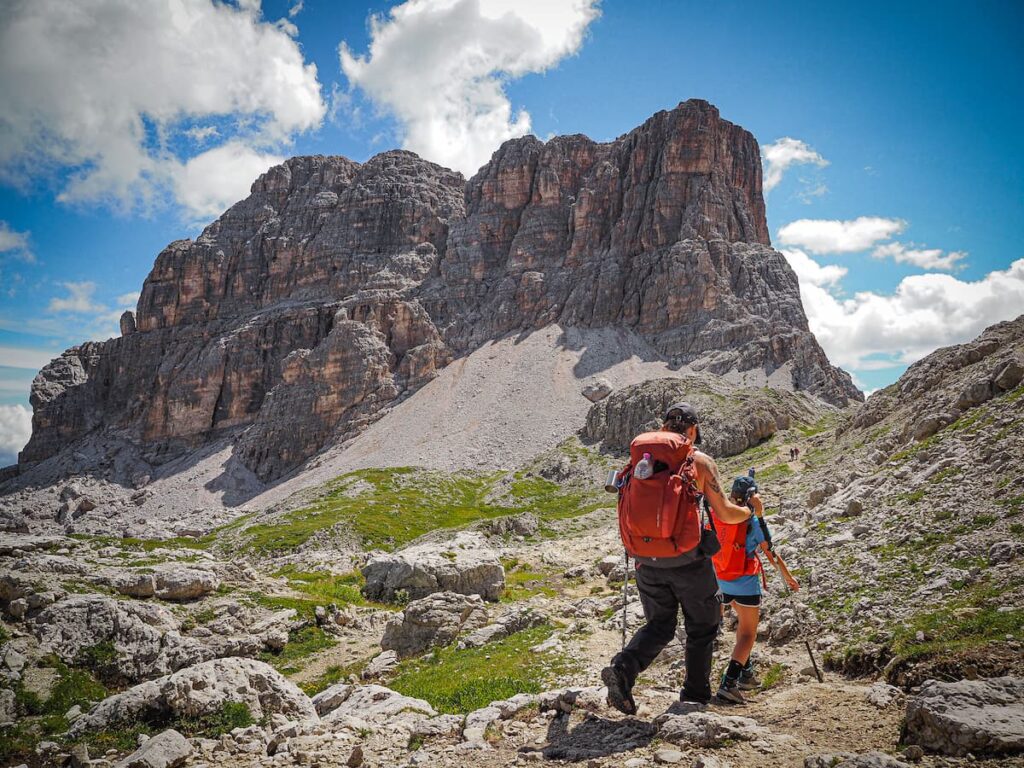
Hut to Hut Hiking in the Dolomites Free Course
Curious about hut-to-hut hiking in the Dolomites, but not sure where to start or what to expect? Sign up for our newsletter that simplifies and educates so you can focus on the views and vino. Get curious, get ready, and let's get started! Sign up here👇🏼
- Free Email Course to Learn : Everything You Need to Know About Hut to Hut Hiking
Thanks for reading this article on the Basic Tips for Your First Hut to Hut Hike.

Author profile: Morgan Fielder is a Doctor of Physical Therapy and passionate hiker who believes in exploring the world on foot with good food. Follow her journey as she shares science-based hiking tips and advocates for sustainable tourism.

